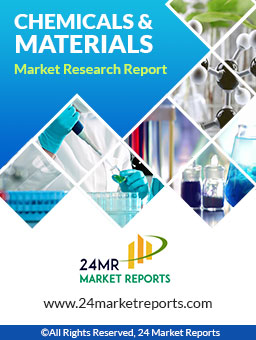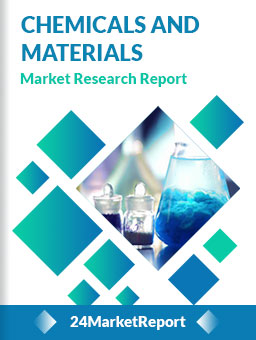The global Synthetic Tartaric Acid market was valued at US$ 376.3 million in 2022 and is projected to reach US$ 574.1 million by 2029, at a CAGR of 6.2% during the forecast period. The influence of COVID-19 and the Russia-Ukraine War were considered while estimating market sizes.
Tartaric acid is a white, crystalline organic acid that occurs naturally in many fruits. It is commonly mixed with sodium bicarbonate and is sold as baking powder used as a leavening agent in food preparation. The acid itself is added to foods as an antioxidant and to impart its distinctive sour taste.
Tartaric acid is used in many applications, food and beverages, wine, pharmaceutical, construction, cosmetic and chemical industry. For food, beverage and wine, tartaric acid is used for acidifying and enhancing the flavors of them. In pharmaceutical industry, tartaric acid is used as an excipient to prepare antibiotics, pills, tablets and some other medicines for heart disorders. In construction sector, tartaric acid is used in gypsum and cement to retard drying, and as a fluidizer of ceramics. In chemical industry, tartaric acid is used for photography, polishing in electronics and plastics industries. For cosmetic, tartaric acid is used as a basic compound in some natural body creams.
Tartaric acid mainly has three types: L-Tartaric Acid, D-Tartaric Acid, DL-Tartaric Acid. L-Tartaric acid is produced in the largest amount. D(-)-tartaric acid is more and more widely used in pharmaceuticals and food industry. DL-Tartaric Acid is widely used in many fields such as foodstuff, medicine, chemical industry and light industry etc.
Synthetic Tartaric Acid Market aims to provide a comprehensive presentation of the global market for Synthetic Tartaric Acid, with both quantitative and qualitative analysis, to help readers develop business/growth strategies, assess the market competitive situation, analyze their position in the current marketplace, and make informed business decisions regarding Synthetic Tartaric Acid. Synthetic Tartaric Acid Market contains market size and forecasts of Synthetic Tartaric Acid in global, including the following market information:
Global Synthetic Tartaric Acid Market Revenue, 2018-2023, 20242035, ($ millions)
Global Synthetic Tartaric Acid Market Sales, 2018-2023, 20242035, (MT)
Global top five Synthetic Tartaric Acid companies in 2022 (%)
The U.S. Market is Estimated at $ Million in 2022, While China is Forecast to Reach $ Million.
Grapes & sun-dried raisins Segment to Reach $ Million by 2029, with a % CAGR in next six years.
The global key manufacturers of Synthetic Tartaric Acid include Alvinesa, Sagar Chemicals, RANDI GROUP, Caviro Distillerie, Australian Tartaric Products, Tarac Technologies, Tartaric Chemicals, Distillerie Mazzari and Distillerie Bonollo, etc. in 2022, the global top five players have a share approximately % in terms of revenue.
We surveyed the Synthetic Tartaric Acid manufacturers, suppliers, distributors and industry experts on this industry, involving the sales, revenue, demand, price change, product type, recent development and plan, industry trends, drivers, challenges, obstacles, and potential risks.
Total Market by Segment:
Global Synthetic Tartaric Acid Market, by Type, 2018-2023, 20242035 ($ Millions) & (MT)
Global Synthetic Tartaric Acid Market Segment Percentages, by Type, 2022 (%)
- Grapes & sun-dried raisins
- Maleic anhydride
- Others
Global Synthetic Tartaric Acid Market, by Application, 2018-2023, 20242035 ($ Millions) & (MT)
Global Synthetic Tartaric Acid Market Segment Percentages, by Application, 2022 (%)
- Wine, Food & Beverage
- Pharmaceutical
- Cosmetics
- Construction
- Chemical
Global Synthetic Tartaric Acid Market, By Region and Country, 2018-2023, 20242035 ($ Millions) & (MT)
Global Synthetic Tartaric Acid Market Segment Percentages, By Region and Country, 2022 (%)
- North America (United States, Canada, Mexico)
- Europe (Germany, France, United Kingdom, Italy, Spain, Rest of Europe)
- Asia-Pacific (China, India, Japan, South Korea, Australia, Rest of APAC)
- The Middle East and Africa (Middle East, Africa)
- South and Central America (Brazil, Argentina, Rest of SCA)
Competitor Analysis
The report also provides analysis of leading market participants including:
- Key companies Synthetic Tartaric Acid revenues in global market, 2018-2023 (Estimated), ($ millions)
- Key companies Synthetic Tartaric Acid revenues share in global market, 2022 (%)
- Key companies Synthetic Tartaric Acid sales in global market, 2018-2023 (Estimated), (MT)
- Key companies Synthetic Tartaric Acid sales share in global market, 2022 (%)
Further, the report presents profiles of competitors in the market, key players include:
- Alvinesa
- Sagar Chemicals
- RANDI GROUP
- Caviro Distillerie
- Australian Tartaric Products
- Tarac Technologies
- Tartaric Chemicals
- Distillerie Mazzari
- Distillerie Bonollo
- Pahi
- Vinicas
- Trtaros Gonzalo Castell
- Omkar Specialty Chemicals
- Yantai Taroke Bio-Engineering
- Ninghai Organic Chemical Factory
- Changmao Biochemical Engineering
- Hangzhou Bioking Biochemical Engineering
- Hangzhou Regin Bio-tech
Outline of Major Chapters:
Chapter 1: Introduces the definition of Synthetic Tartaric Acid, market overview.
Chapter 2: Global Synthetic Tartaric Acid market size in revenue and volume.
Chapter 3: Detailed analysis of Synthetic Tartaric Acid manufacturers competitive landscape, price, sales and revenue market share, latest development plan, merger, and acquisition information, etc.
Chapter 4: Provides the analysis of various market segments by type, covering the market size and development potential of each market segment, to help readers find the blue ocean market in different market segments.
Chapter 5: Provides the analysis of various market segments by application, covering the market size and development potential of each market segment, to help readers find the blue ocean market in different downstream markets.
Chapter 6: Sales of Synthetic Tartaric Acid in regional level and country level. It provides a quantitative analysis of the market size and development potential of each region and its main countries and introduces the market development, future development prospects, market space of each country in the world.
Chapter 7: Provides profiles of key players, introducing the basic situation of the main companies in the market in detail, including product sales, revenue, price, gross margin, product introduction, recent development, etc.
Chapter 8: Global Synthetic Tartaric Acid capacity by region & country.
Chapter 9: Introduces the market dynamics, latest developments of the market, the driving factors and restrictive factors of the market, the challenges and risks faced by manufacturers in the industry, and the analysis of relevant policies in the industry.
Chapter 10: Analysis of industrial chain, including the upstream and downstream of the industry.
Chapter 11: The main points and conclusions of the report.






 Industry Market Size
Industry Market Size SWOT Analysis
SWOT Analysis Industry Major Players
Industry Major Players Revenue Forecasts
Revenue Forecasts Historical and Forecast Growth
Historical and Forecast Growth Profitability Analysis
Profitability Analysis
























